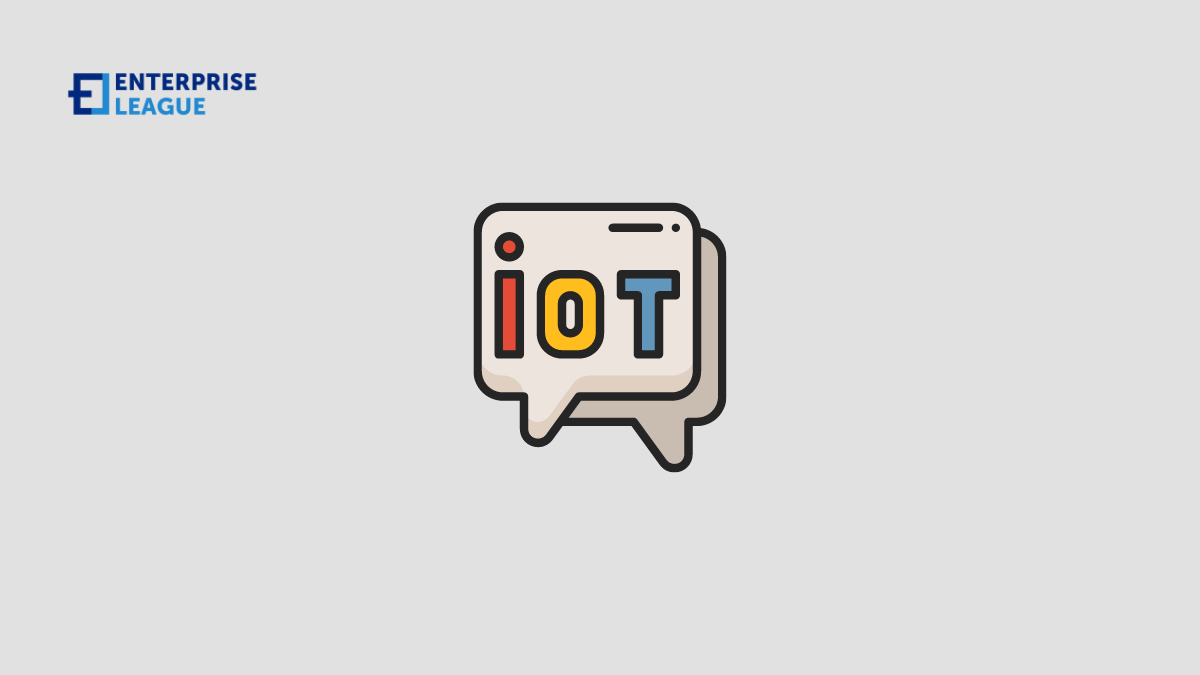In recent years, the Internet of Things (IoT) has become one of the main innovations of the 21st century. Now, we can interface humans with everyday objects like cars, electric appliances, etc. But how is this connection made possible? IoT uses both connectivity and messaging protocol that provides the base for communication within a remote location. The messaging protocol is referred to as Message Queuing Telemetry Transport (MQTT).
MQTT is a standard lightweight messaging protocol specifically designed to work under low-bandwidth locations to convey telemetry information. MQTT uses the concept of ‘publish and subscribe’ via the MQTT broker. It means that a machine (publisher) publishes a topic; sends it to the MQTT broker, which will distribute information to all the machines (subscribers) embedded in that device.
Its features of low bandwidth, low latency, minimal power consumption, and being able to be used on small footprint devices have made many industries in manufacturing, automotive, telecommunication, etc., use MQTT. Being the most preferred messaging protocol, how does it work?
How does MQTT work?
MQTT has a simple architecture that utilizes the available bandwidth for transmission. This simple architecture is called the ‘Publish and Subscribe’ model. The model involves clients (a sender and recipient), but communication isn’t direct because a third party is engaged, called an MQTT broker.
When the publisher wants to send a message, it publishes the topic and sends it to the broker. The broker finds all the subscribers of the subject and distributes information. It entirely means that a publisher and subscriber have no direct link to each other. The process is reversible because the publisher can be the subscriber, and the subscriber can be the publisher.
The broker is an intermediary whenever the connection is cut from the publisher or subscriber. When the subscriber is offline, the broker will hold information sent by the publisher until the subscriber is back online. On the other hand, the broker will relay particular instruction messages (cached messages) to subscribers whenever there is a communication breakdown from the broker.
MQTT messages
An MQTT message is categorized into four phases: connection, verification, communication, and endpoint. A client begins by making a Transmission Control Protocol/Internet Protocol (TCP/IP) association with the specialist by utilizing either a standard or custom port characterized by the intermediary’s administrators. While communicating, it’s vital to perceive that the server could proceed with an old meeting assuming it is given a reused client personality.
There are two standard ports of communication in MQTT: encrypted (8883) and nonencrypted (1883) communication – utilizing Secure Sockets Layer (SSL)/Transport Layer Security (TLS). During the SSL/TLS handshake, the client approves the server testament and confirms the server. The client may likewise give a testament to the representative during the handshake. The agent can utilize this to validate the client. While not explicitly part of the MQTT determination, it has become standard for agents to help client validation with SSL/TLS client-side testaments.
MQTT is a lightweight code protocol since every message has a little code. Each message comprises a decent header of 2 bytes, a discretionary variable header, a message payload restricted to 256 megabytes (MB) of data, and the nature of administration (quality of service).
At the point when a distributor or endorser needs to end an MQTT meeting, it sends a ‘Disconnect’ message to the merchant and afterwards shuts the association. It is an effortless closure since it enables the client to effectively reconnect by giving its client character and continuing the latest relevant point of interest.
Should the termination happen unexpectedly without time for a distributor to send a ‘Disconnect’ message, the representative might send endorsers a statement from the distributor that the intermediary has recently reserved. The message, known as a last will and confirmation, furnishes endorsers with directions for what to do if the distributor suddenly disappears.
MQTT in IoT projects
Here are some of the benefits why a company would collaborate with an IoT company to implement the MQTT messaging protocol:
- Lightweight Code Protocol: MQTT clients are tiny and require insignificant assets to be utilized on little microcontrollers. MQTT message headers are little to advance organization data transmission.
- Work Under Unreliable Network: Numerous IoT gadgets are associated with inconsistent cell organizations. MQTT’s help for tireless meetings diminishes the chance to reconnect the client with the dealer.
- Two Way Communication: MQTT takes into consideration informing between gadget to cloud to device unendingly. It makes for simple telecom messages to gatherings of things.
- Solid Message Delivery: The dependability of message conveyance is significant for some IoT use cases. Therefore, MQTT has three characterized nature of administration levels: 0 – at most once, 1-no less than once, 2 – precisely once
- Secure: MQTT makes it simple to scramble messages utilizing TLS and validate clients using present-day confirmation conventions, like OAuth.
- Fast Communication: MQTT works continuously, without any postpones beyond the quality of service.
- Comprehensive Support for Programming Languages: MQTT has comprehensive support for programming languages, making it simple for designers to use while developing.
Drawbacks of MQTT
- MQTT has more slow communication cycles than Constrained Application Protocol (CoAP).
- MQTT’s asset disclosure deals with adaptable point membership, though CoAP utilizes a steady asset revelation framework.
- Being a lightweight protocol, it has minimal authentication features.
- MQTT is decoded. It utilizes TLS/SSL (Transport Layer Security/Secure Sockets Layer) for security encryption.
- It’s challenging to make an internationally versatile MQTT organization.
Applications Of MQTT in the IoT industry
- Car Industry: MQTT IoT projects in the car industry reduce vehicle robbery avoidance, vehicle observing, and far-off support of vehicles.
- Transport Operations: One of the best MQTT conventions in the IoT model is in the strategies area. MQTT IoT centre points, for example, Airtel IoT, assist with following cargo vehicles and give continuous cautions to cargo wellbeing and development.
- Home Computerization: IoT dashboards use MQTT to oversee home gadgets immediately with your cell phones.
- Agriculture: The emergence of smart farming has enabled farmers to monitor soil pH, temperature, and humidity – essential for effective yielding and overall farming techniques.
- Energy Industry: IoT MQTT boards in the energy area help to construct a more brilliant energy network and upgrade power utilization by purchasers.
Conclusion
MQTT assumes a significant part in making IoT projects more ‘low-lift’ regarding specialized determinations while accomplishing the ideal associations among gadgets, servers, and applications. The publish and subscribe model in MQTT makes it simple to be adopted in IoT. Additionally, choosing the correct cloud service will enhance a high-quality service for your project with the help of MQTT brokers.
More must-read stories from Enterprise League:
- Entrepreneurs over 60 are the new cool in town.
- It’s about time you to master managing remote teams successfully – best practices and tips.
- Find out which are the most unpredictable costs of doing business.
- A few tricks up your sleeve when dealing with clients who refuse to pay.
- Learn all about the different challenges businesses going online face.
Related Articles
Workplace Violence or Drug Accusations: Protecting Yourself Legally
Accusations of workplace violence or drug-related misconduct can derail a career, even when the claims are unfounded. A single allegation can lead to suspension, internal investigations, damaged professional relationships, and in serious cases, criminal charges....
Workers’ Compensation Costs for Factory and Warehouse Forklift Accidents
Forklifts play a central role in day-to-day operations across factories and warehouses, but they also create a significant risk of injury. When a forklift overturns, strikes a pedestrian, or drops a load, the financial impact reaches far beyond the immediate medical...
Delayed Construction Injury Reports: Impact on Workers’ Comp
Construction work carries unavoidable risks, which is why workers' compensation exists to protect employees after an injury. But one factor can alter the entire outcome of a claim: delayed reporting. In the construction industry, where injuries often occur in...
Workplace Violence or Drug Accusations: Protecting Yourself Legally
Accusations of workplace violence or drug-related misconduct can derail a career, even when the claims are unfounded. A single allegation can lead to suspension, internal investigations, damaged professional relationships, and in serious cases, criminal charges....
Workers’ Compensation Costs for Factory and Warehouse Forklift Accidents
Forklifts play a central role in day-to-day operations across factories and warehouses, but they also create a significant risk of injury. When a forklift overturns, strikes a pedestrian, or drops a load, the financial impact reaches far beyond the immediate medical...






